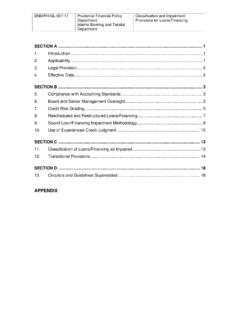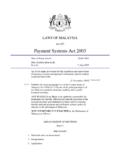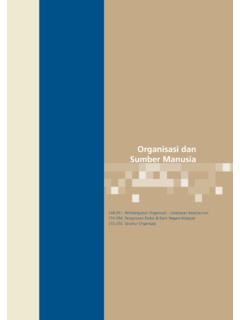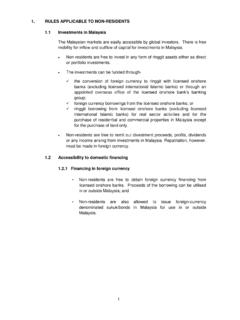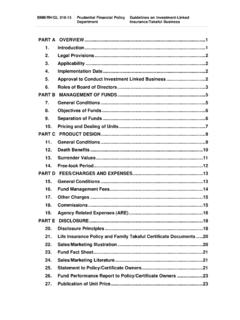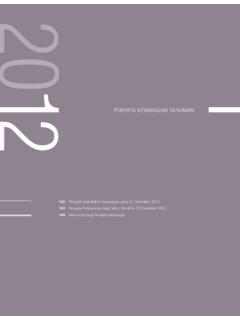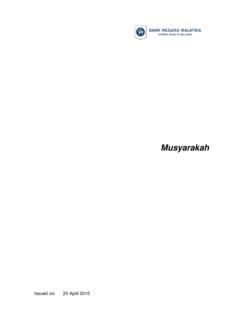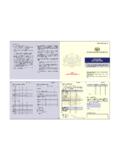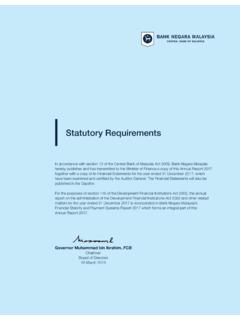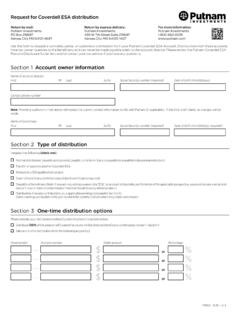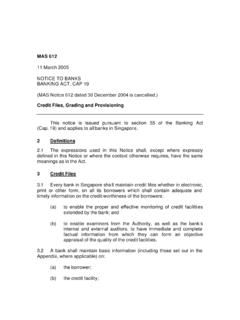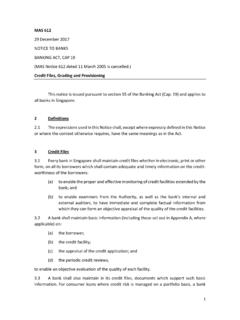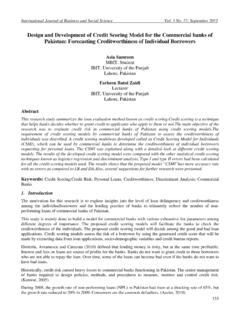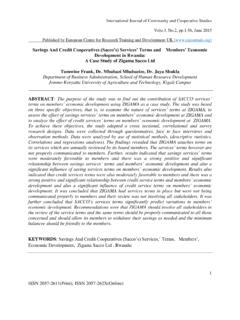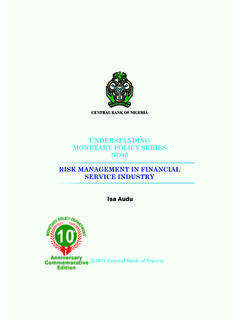Transcription of Guidelines On Classification Of Impaired …
1 INTRODUCTION .. 1. LEGAL 1. Classification OF Impaired 1. TREATMENT OF INTEREST INCOME ON Impaired loan .. 2. RECLASSIFICATION OF Impaired loan AS UNIMPAIRED loan .. 3. PROVISIONING .. 4. RESPONSIBILITIES OF THE BOARD OF DIRECTORS AND 6. APPENDIX .. 8. BNM/RH/GL/005-3 Development Finance Guideline On Classification Of Page 1/10. and Enterprise Impaired Loans/ financing And Department Provisioning For Bad And Doubtful Debts INTRODUCTION. This guideline sets out the minimum standards on Classification of Impaired loans and advances and provisioning requirements for such assets of development financial institutions (DFIs). The guideline promotes loan / financing accounting policies and practices which are consistent with sound risk management practices in order to ensure that the Impaired assets and losses are identified and recognised in a timely manner and loan assets and income are fairly and prudently stated.
2 LEGAL PROVISION. 2. This guideline is issued pursuant to section 41 of the Development Financial Institutions Act 2002 (DFIA) which requires a prescribed institution to meet such other prudential requirements, and within such time, as Bank Negara Malaysia may specify. Classification OF Impaired LOANS. 3. DFIs are required to conduct regular reviews of all loans and other advances extended to their clients, with a view to classify Impaired loans and to treat such loans accordingly. DFIs may formulate their own system of classifying Impaired loans, subject to complying with the minimum categories of Classification as follows:- i. Bad Credit facilities or portion thereof which are deemed to be uncollectible and worthless, on the basis of relevant circumstances.
3 Ii. Doubtful Credit facilities or portion thereof where collection in full is improbable and there is a high risk of ultimate default. BNM/RH/GL/005-3 Development Finance Guideline On Classification Of Page 2/10. and Enterprise Impaired Loans/ financing And Department Provisioning For Bad And Doubtful Debts iii. Sub-standard Credit facilities or portion thereof, which involve more than a normal risk of loss due to certain adverse factors, but which at this stage, not considered as doubtful or bad. The adverse factors could include delays in debt servicing, unfavourable financial condition, insufficient security or other factors which give rise to some doubts on the repayment capacity of the borrower.
4 As a general rule, Impaired loans and credit facilities should be classified in the following manner: Period of Default Classification 6 months but less than 9 months Substandard, unless there is evidence to support a worse-off Classification . 9 months but less than 12 months Doubtful, unless there is evidence to support a worse-off Classification . 12 months and above Bad 3 months in the case of credit cards and trade financing instruments. TREATMENT OF INTEREST INCOME ON Impaired loan . 4. All interest accrued from the date the account is classified as Impaired loan shall forthwith be suspended. All uncollected interest that has been previously accrued and recognised as income need to be reversed out of income.
5 DFIs are required to claw-back the interest to the first day of default. Interest earned on an BNM/RH/GL/005-3 Development Finance Guideline On Classification Of Page 3/10. and Enterprise Impaired Loans/ financing And Department Provisioning For Bad And Doubtful Debts account which has been classified as Impaired loan shall only be recognised as income as and when the interest has been collected by the DFIs cash basis. 5. In the case of Islamic banking, the unearned profit need not be reversed out of income given that the method of distribution of profit in Islamic banking is based on the concept of Mudharabah (profit-sharing), whereby the profit has already been distributed to the customer and hence it is not appropriate for the profit to be clawed- back from the first day of default.
6 Therefore, the Islamic banking operations which are using the accrual basis are exempted from clawing-back the profit from the first day of default upon Classification of the account as Impaired . However, the DFIs are required to suspend the profit as and when the account is classified as Impaired . RECLASSIFICATION OF Impaired loan AS UNIMPAIRED loan . 6. An Impaired loan can be reclassified as unimpaired loan when the principal and interest are deemed to be fully collectible in accordance with the terms of the loan agreement, indicating that the risk profile of the borrower has improved. As a general principle, this can take place when: i. the DFI receives full repayment of the loan 's past due principal and interest, and the DFI expects repayment of the remaining principal and interest as scheduled in the loan agreement.
7 Ii. the borrower has resumed paying the full amount of the scheduled principal and interest payments for at least 6 months, and all the remaining payments (including full compensation for overdue payments) are deemed to be collectible in a timely manner; or iii. the loan otherwise becomes well-secured and is in the process of collection. BNM/RH/GL/005-3 Development Finance Guideline On Classification Of Page 4/10. and Enterprise Impaired Loans/ financing And Department Provisioning For Bad And Doubtful Debts 7. The process for restoring an Impaired loan to unimpaired status should be supported by a current, well documented credit evaluation of the borrower's financial condition and other factors affecting the prospects for repayment, including consideration of the borrower's repayment, government guarantees and other relevant factors.
8 A mere rescheduling of repayment terms does not warrant reclassifying an Impaired loan as an unimpaired loan . PROVISIONING. 8. DFIs are required to maintain an overall provision at a level that is adequate to absorb potential loan / financing losses. DFIs are required to review the adequacy of the specific and general provisions regularly at least every 6 months to ensure that the provisions set aside are consistent with current information about the collectibility of the loans. A specific provision is a provision that is established against a loss that is identified in an individual loan while general provision is a provision that is established for losses that are known to exist, but cannot yet to be directly addressed to individual loans.
9 9. The DFIs' assessment on the adequacy of the provisions should be performed in a systematic way, in a consistent manner over time, in conformity with objective criteria and prudent practice and be supported by adequate documentation. 10. DFIs are required to maintain general provision of at least of total outstanding loans (including housing loans sold to Cagamas Berhad), net of interest- in-suspense and specific provision for substandard, bad and doubtful debts. BNM/RH/GL/005-3 Development Finance Guideline On Classification Of Page 5/10. and Enterprise Impaired Loans/ financing And Department Provisioning For Bad And Doubtful Debts 11. With regard to specific provision, the amount required is as follows: Specific provision on the shortfall in security value over Classification the amount outstanding, net of unearned interest and interest suspended Substandard 10%.
10 Doubtful 50%. Bad 100%. Credit card loans and trade financing instruments which are in arrears between 3 to 6. months should be classified as doubtful requiring 50% provisioning and those which are more than 6 months in arrears should be classified as bad requiring 100%. provisioning. 12. In addition, DFIs are required to set aside provisions for off-balance sheet items where the DFIs face credit risk from failure of counterparties t o fulfil their contractual obligations or else it should be disclosed as a contingent liability. 13. In determining the value of the various forms of collateral, DFIs are required to observe the guideline on the valuation of security as enumerated in the Appendix. Write-Off of Impaired Loans 14.
